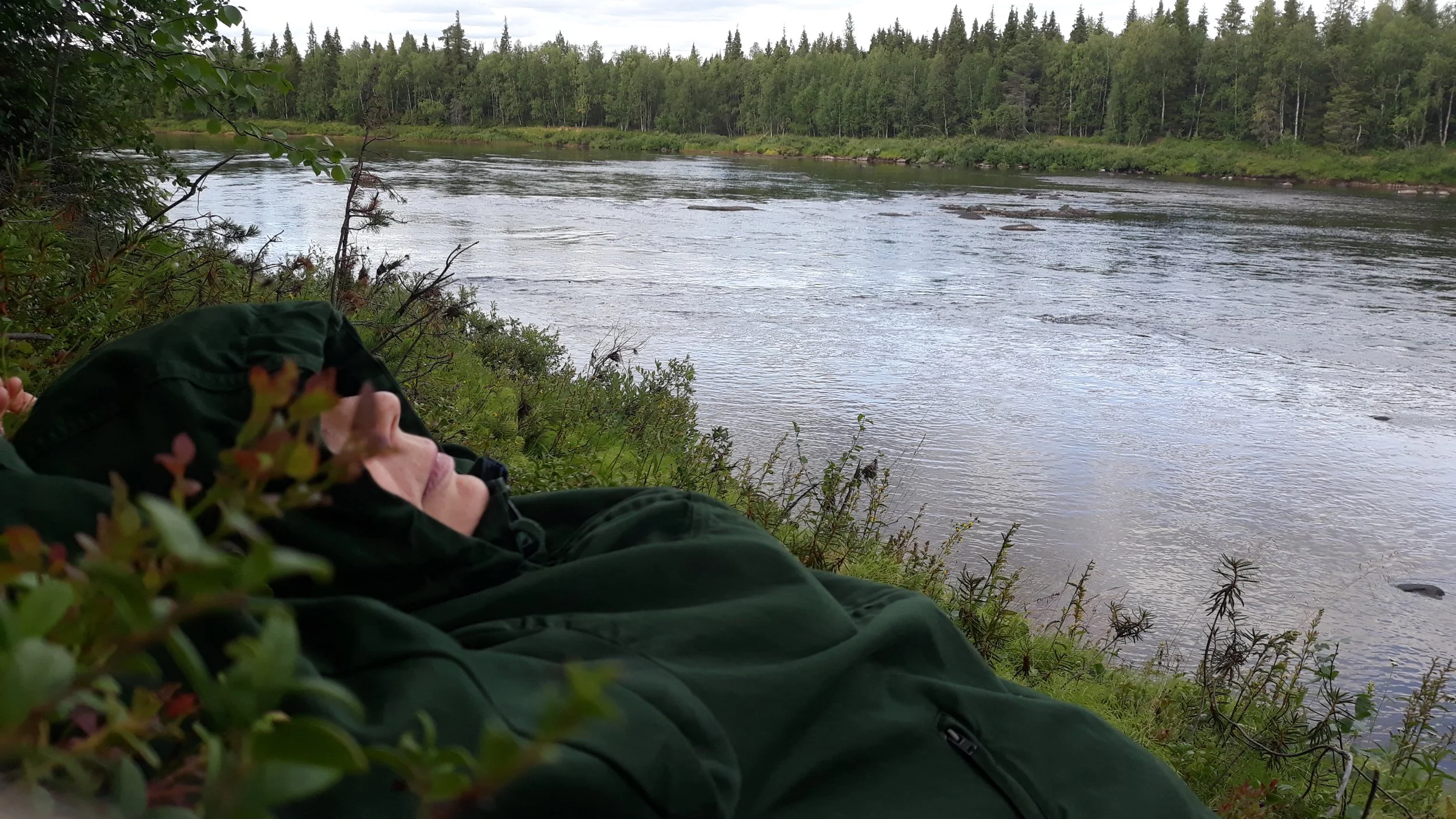Image: from Mirja Hiltunen’s Women’s Forest photo series
SESSION 6: ENCOUNTERING THE POSSIBLE
DAY TWO: SATURDAY, JANUARY 28
9:15-10:15 UTC -7 | 18:15-19:15 UTC +2
Moderator: Mirja Hiltunen
ZOOM LINK
The possibilities of Arts in special educational work
Merete Hassel
The starting point is the peer-reviewed anthology The possibilities of arts in special educational work, Universitetsforlaget, 2022, where I have been a co-author and one of four editors.
I want to highlight the possibilities of arts in special educational work and specifically focus upon one of the perspectives in the anthology: Outsider Art. Trastad Gård was opened in 1954 as Northern Norway's first central institution for people with developmental disabilities. The institution was one of the first in Norway to offer schooling for this group. Design and artistic activity were a central part of the teaching. The art activity became an important point of contact between the local population and the institution. Art became proof that people who were considered uneducable could perform and learn, and for some this was the start of a professional life as an artist an a powerful way of creating possible futures.
Trastad Gård was closed in 1991 as part of the HVPU reform. Trastad Samlinger is now a cultural history museum and Outsider Art gallery. The Sami perspective is also visible here.
Ragnhild Merete Hassel, senior adviser at the Norwegian Centre for arts and culture in education (KKS), Nord University, Bodø.
I have a Bachelor in Library and Information Science, Intermediate course in social anthropology/Sámi studies and a Master’s degree in Adaptive Learning with specialization in special-needs education. My Master,s thesis is related to teachers’ perspectives on arts education for students with intellectual disabilities. Area of responsibility at KKS: networks, research dissemination, customized training etc.
ragnhild.m.hassel@nord.no.
www.kunstkultursenteret.no
https://kunstkultursenteret.no/om-senteret/ansatte/merete-hassel/
What would you like to share?Art-based research addressing intergenerational encounters
Mirja Hiltunen
The presentation will focus on ongoing art-based research I am conducting in the Circumpolar North since 2018. I will show examples of short films and installations based on encounters with grandmothers in Komi Republic, Russia; province of Lapland, Finland and Yukon, Canada. These northern places and cultures share many similarities but also have significant differences. I am especially interested in grandmothers’ values, everyday environments and heritage, which they want to share with their grandchildren. At the same time their voices bring forth the rich and diverse northern culture, and the rapid societal changes and challenges the new generation faces.
Mirja Hiltunen (Doctor of Art, MEd ) is professor and the head of Art Education in the Faculty of Art and design, University of Lapland, Rovaniemi, adjunct professor in University of Oulu. She has devised a performative art strategy and been leading community-based art education projects over twenty years. The place-specificity, performativity and socially engaged art are particular interests to her. She has presented numerous international research papers and published her work in art education journals and books and art exhibitions.
Embroidered Stances: Enhancing cross-cultural dialogue through crafting
Lola Cervant (Fabiola Hernandez Cervantes), Tanya Kravtsov
Our paper presents an art project Embroidered Stances, addressing themes of diversity, craftivism, and sense of community through craft making. This project revitalises the tradition of blanket embroidery, which began in Finland in the late 1700s, in a contemporary context and expresses personal and political content through embroidery. The working group consists of twelve participants with a background in art, design, and crafts, as well as artist-activists and artist-researchers based in Rovaniemi. With diverse cultural roots the group explores the importance of one's own cultural background and the constant change and interaction of cultures. Crafting sessions include nature-based wool dyeing, embroidery, and discussions. Our paper explores the potential of craft making that is rooted in local tradition to enhance cross-cultural dialogue among locals and newcomers of the Arctic. We aim to respond to the cultural diversity in the Arctic and discuss possibilities of art collaborations to reinforce the sense of community.
Lola Cervantes (Mexico 1989) Designer and artist using drawing as a tool, to reflect on human and territory. Her main research interest lies in the intersection of craft and design through collaborative processes and art-based methods, focused on sustainability, traditional knowledge, Arctic wool, and textiles. She holds a bachelor’s degree in Industrial Design (Mexico), a master’s degree in Drawing (Spain), and a specialization in Graphic Arts (Hungary). She is a doctoral candidate at the University of Lapland and member of the board of the Artists' Association of Lapland. She has exhibited her work individually in Mexico, Hungary, Slovakia, and Finland.
lolacervant@gmail.com
https://lolacervant.weebly.com/projects.html
Tanya Kravtsov is an artist and a doctoral candidate in the Faculty of Art and Design at the University of Lapland. Originally from south-western Siberia, she had lived in Israel, and since 2016 has based her life in Rovaniemi. Her artistic education and practice vary from visual arts to ceramics and environmental art. Her interests include art-based research methods, northern traditional and contemporary handicrafts, natural materials, connectedness with nature and ecological sensibility. She approaches her research topics from the perspective of human and non-human relations.
tatiana.kravtsov@ulapland.fi
https://tanyakravtsov.wixsite.com/artist

